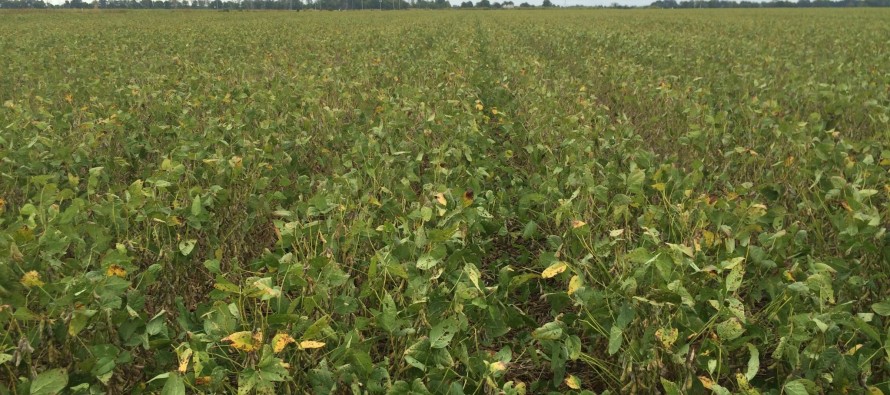Soybean Harvest Aids

Related Articles
- 2010 Soybean And Corn Variety Trial Data 3
- Flag The Technology 0
- 2011 Rice Burndown Considerations 0
Latest Tweets
Several calls have come in over the last week regarding soybean harvest aid options for various scenarios. In some cases, fields have been observed with varying degrees of maturity. In these situations, the majority of the pods observed across the field have matured, however, there are still a number of pods that are green with lots of green leaves and/or stems still present within the field. The question then becomes whether or not it is safe to apply a harvest aid. In the fields that we have observed this week that fall under this description, 60-70% of the pods are mature and the remaining pods contain seed that have completely separated from the pod wall. If the majority of the seed pods have reached their mature color and the remaining pods contain seed that are completely separated from the pod wall, then it is safe to make a harvest aid application.
Another situation where harvest aids may be considered would be fields where inadequate canopy closure allowed weeds to germinate prior to soybean maturity. If weed populations are at a high enough level, problems such as increased seed moisture, seed damage, excess foreign material, or decreased harvest efficiency may occur.
A higher application volume is generally recommended when making a harvest aid application as coverage is essential. Also, keep in mind that each of the products available for use as a harvest aid in soybean has a specific preharvest interval that may influence the timing of an application. Check the weather forecast before making the application and, if the decision to utilize a harvest aid is made, then be prepared to harvest as soon as this interval has passed.
The following products are labeled for use as a harvest aid in soybean:
Aim EC at 1 to 1.5 fl oz/acre
Aim EC is a product that could be used in situations where excessive weed pressure may cause harvest problems. Generally speaking, this product will be beneficial for desiccation of vines (morningglory, redvine, etc.). Aim 2EC is labeled in soybean and will not likely have significant effect as a desiccant for the crop. A nonionic surfactant (0.25% V/V) or crop oil concentrate (1% V/V) should be included. Keep in mind that there is a 3 day preharvest interval if this product is used as a harvest aid.
paraquat at 8 to 16 fl oz/acre
Paraquat (Gramoxone SL 2.0, Firestorm, etc.) will provide desiccation of both weeds and soybean. The preferred application rate is 0.25 lb ai/acre. A nonionic surfactant (0.25% V/V) should be included. For paraquat, a 15 day preharvest interval is required.
Sharpen at 1 to 2 fl oz/acre
Sharpen will provide desiccation of broadleaf weeds and soybean. The addition of a methylated seed oil (1% V/V) plus ammonium sulfate (1 to 2% W/V) is recommended for optimum desiccation. Application rates of 1.5 to 2 fl oz/acre are generally required when Sharpen is applied alone. Sharpen has a 3 day preharvest interval. However, optimum desiccation levels may require 7 to 10 days from the time of application.
sodium chlorate at 3 to 6 lb ai/acre
Sodium chlorate will also provide desiccation of weeds and soybean. However, the level of activity from this application will depend on environmental conditions at the time of application. In situations where excessive grass pressure is present, a tank-mix of paraquat at 0.25 lb ai/acre + sodium chlorate at 3 lb ai/acre may help to dry the grassy weeds down to prepare for harvest. One thing to keep in mind is that sodium chlorate is a true desiccant and will physically draw moisture out of plant tissues and seed. Therefore, an increased potential for soybean to shatter exists and harvest should occur in a timely manner. Sodium chlorate has a 7 to 10 day preharvest interval.
More specific information about these and other products for use as harvest aids in soybean can be found in the 2015 Weed Control Guidelines for Mississippi.





Let me tell You a sad story ! There are no comments yet, but You can be first one to comment this article.
Write a comment